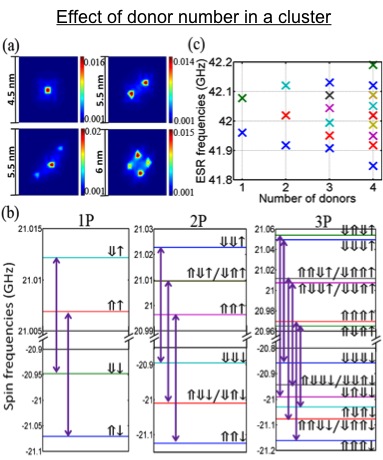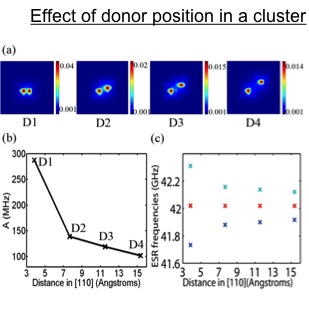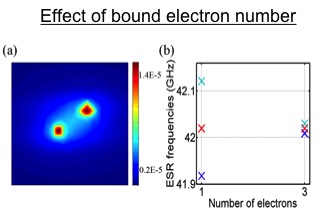|
Objective:
- Experimental probe of configuration, i.e. number of donors and donor locations, in a donor cluster is needed.
- Developing a metrology based electron spin resonance (ESR) technology.
Approach:
- Atomistic tight-binding approach and self-consistent field method is employed for solving donor-cluster wavefunctions.
- The study object can be generally described as an m-nuclear-spin-1-electron-spin system.
- The effective spin Hamitonian contains Fermi contact hyperfine, dipolar interaction and Zeeman terms, which determines the ESR spectrum.
- The configuration can be figured out by comparing experimental and theoretical ESR spectrums.
Results/Impact:
- Number of ESR peaks goes up with number of donors.
- Fermi contact hyperfine constants as well as the separation of ESR peaks decrease with the distance between two donors.
- Given the same donor number and the same donor locations in a cluster, the separations of ESR frequencies decrease with the bound electron number.
|
|



